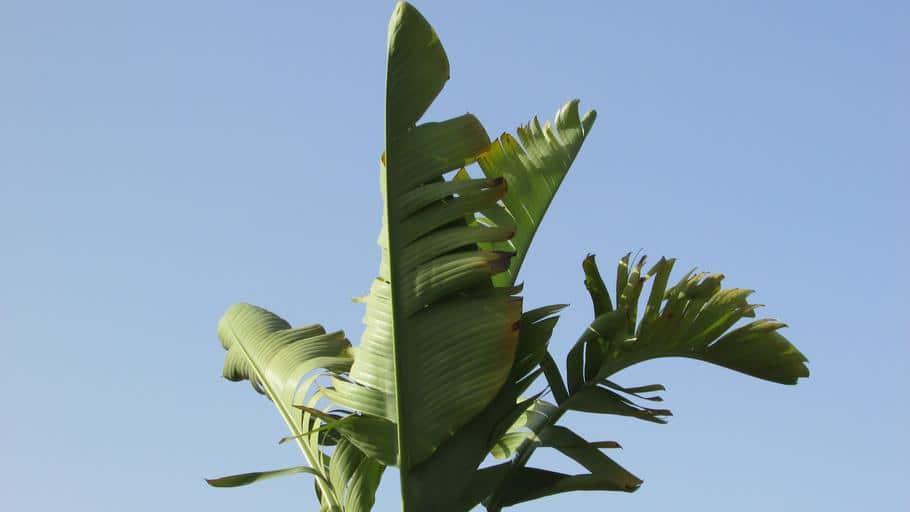Have you ever wondered how to prune a banana tree? If you just planted bananas, it can be tricky to figure out how to prune them. The best time to prune a banana plant is before it bears fruit, so there’ll only be one stem remaining.
Let it grow for about six to eight months, and then prune it again but leave one sucker to replace the main stem for the next growing season. Once you’ve harvested the bananas, cut the main stem until they’re about two and a half feet tall. Cut the other stems as well in the next few weeks but leave the sucker in one piece.

What You Need to Know About Growing a Banana Plant
The banana tree is commonly found in tropical countries, but contrary to popular belief, banana plants are not trees. Most people think bananas are trees because of its size, but it’s actually the largest herb in the world.
Bananas are delicious and it would be great to plant them in your backyard. Fortunately, these plants don’t need too much space, making them great houseplants. If you’re thinking about planting bananas, here’s what you need to know:
Light
Since banana plants thrive best in tropical regions, it makes sense that they prefer full sun.
Soil
Bananas grow well in well-draining soil with organic amendments. Plant them deep in slightly acidic soil with a pH level of 5.5 to 6.5.
Water
As mentioned, banana trees are mainly found in tropical regions, and they also originated in rainforests. This means that they need plenty of water and moisture in the air. They’re best planted in groups rather than individual plants because they retain moisture better this way.
The rule of thumb for watering banana plants is to ensure that the soil is moist at all times, but not soggy. Give your plants around one to two inches per week, and make sure not to overwater because this can cause root rot.
Temperature and humidity
Banana plants like humid conditions, but they don’t subject them to extreme weather conditions. Even the hardiest cold-tolerant banana plants prefer to be in temperatures between 75 to 95 degrees F.
Extremely low temperatures stunt can stunt plant growth, and it can even cause it to die back. You can guard your plants against extreme temperatures by placing them inside a greenhouse kit or a sheltered area. Another option is to bring your plants indoors or to winterize it when the cold season comes.
Fertilizer
You can fertilizer your banana plants every month using a balanced fertilizer. According to the California Rare Fruit Growers, you should scatter the fertilizer around the plant – about four to eight feet from the plant. Make sure NOT to let the fertilizer touch the trunk. If your bananas are in a container, do the same thing but at half the outdoor plants’ rate.
You can also feed them organic matter but pay close attention to the levels of potassium. Bananas are rich in potassium, making it an essential growth nutrient for banana plants.
Growing Bananas in Containers
If you don’t have a backyard, you can plant bananas in pots. However, they need at least 15-gallon containers to ensure that their roots can grow well. The main advantage of potted bananas is that you have full control over the plant’s environment. You can protect it from cold weather and unpredictable climate.
However, these plants are hungry and thirsty. Make sure you can keep up with their needs should you decide to plant them in containers. Only use high-grade potting mix and fertilize them frequently. Don’t forget about repotting your bananas at least every three years.
The Benefits of Planting in Using a Greenhouse Kit
A greenhouse kit is excellent for planting bananas because it allows you to control the temperature inside, allowing you to grow these tropical plants anywhere. Even if you live in colder regions, you can create a tropical climate inside your greenhouse kit. Other than that, here are other reasons why gardeners and hobbyists love to plant in a greenhouse:
You can plant early and grow almost anything
With a greenhouse, you can start planting even before the cold season begins in your area. Additionally, you can grow almost anything inside a greenhouse – from ornamental plants, fruit trees, and vegetables. By planting early, you’ll be able to harvest your crops earlier as well.
You can protect your plants from inclement weather
Unpredictable weather can take a toll on your plants. You can protect them from snow, frost, ice, heavy rain, and high winds by placing them inside a greenhouse. Once the weather becomes better, you can then transfer your plants outside if you want to.
You can keep your plants safe from harmful insects
Harmful insects like the sugarcane weevil, banana scab moths, banana skipper, and banana aphids prey on your plant’s leaf, fruit, rhizome, and pseudostem. Keeping them inside a greenhouse lowers the risk of attracting these pesky insects.
Final Thoughts on How to Prune a Banana Tree
Knowing how to prune a banana tree is just a part of the equation. To grow healthy and delicious bananas, you need to know the growing requirements of the plant. By remembering the tips above, you’ll be able to pick and enjoy delicious bananas straight from your backyard.
